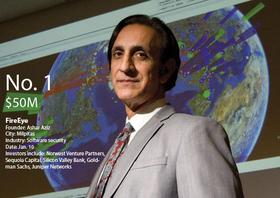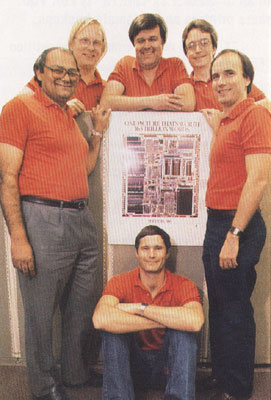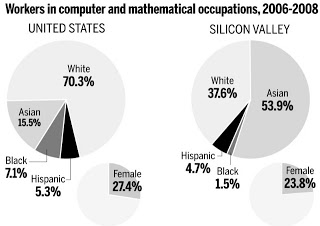Pakistani-American Entrepreneurs Get Top Funding from Silicon Valley VCs
By Riaz Haq
Latest funding of Ashar Aziz's Fireeye and Zia Yusuf's Streetline rank #1 and #4 among top five VC deals in Silicon Valley announced in January 2013, according to the Silicon Valley Business Journal .

Fireeye is riding high on a wave of growing cyber security concerns amidst increasing cyber attacks being reported almost daily from around the globe. Fireye's founder Asgar Aziz is among the top recognized experts in the field of Internet ad computer security. With the recent $50 million round from top investors, the company has raised $100 million to date. The new funding comes from new and existing investors — including Sequoia Capital, Norwest Venture Partners, Goldman Sachs, Juniper Networks, Silicon Valley Bank, and others.
Streetline is offering smartphone applications to help drivers find the increasingly scarce parking spots in crowded places. The company bills itself as "the leading provider of smart parking solutions to cities, garages, airports, universities and other private parking providers". The company has raised $25 million in January, 2013 from True Ventures, with participation by new investors Qualcomm Ventures and Citi and existing investors Sutter Hill Ventures, RockPort Capital Partners and Fontinalis Partners. The company has now raised a total of $40 million and says it recently obtained a $25 million credit facility from Citi, too.
Another Pakistani-American who has been in the news is Rayid Ghani who served as the Chief Scientist in President Obama's re-election campaign organization. Before joining the Obama Campaign, Ghani worked for Accenture as Chief Scientist and developed tools to mine mountains of private data of client corporations to find statistical patterns that could forecast consumer behavior. Instead of just using Facebook for posting messages and tracking its followers’ feelings, Ghani's team turned social media into a tool for efficiently recruiting the human resources it needed leading into the election’s home stretch.
Using Ghani's tools, the Obama campaign was able to match up supporters’ friends with voting lists and decide how it should reach out to supporters to reach their friends through micro-targeting. If someone was going to spread a message to 10 people, the campaign wanted to ensure they reached 10 people most likely to take actions such as donate money, get active knocking on doors or even switch sides.

Pakistani-Americans Ashar, Ghani, Zia and many other entrepreneurs and professionals like them from Asia represent a dramatic shift in Silicon Valley's racial mix over the last few decades. I have been a witness to this historic change. When I arrived here to join Intel in 1981, there were few non-whites in the Valley. In fact, I was the only nonwhite in a picture of the six-member award winning Intel 80386 CPU design team which was published by the PC Magazine in 1988.

My experience of the demographic changes in this high-tech Valley is not just anecdotal. It's supported by data compiled by the local San Jose Mercury newspaper in 2010. The data shows that 49% of Intel employees are now Asian, a full 7% more than whites. In Silicon Valley, the difference is even more pronounced with Asians accounting for 53.9% of the employees versus 37.6% white workers.

With Asians accounting for just 15.5% of the high-tech work force nationally, Silicon Valley's high-tech racial mix is also very different from the rest of the country. Silicon Valley's employee pool also differs in terms of under-representation of Blacks, Hispanics and women relative the national averages.
Among Asian-Americans, Pakistani-Americans are the 7th largest community in America, according to a report titled "A Community of Contrasts Asian Americans in the United States: 2011" published by Asian-American Center For Advancing Justice . Pakistani-American population has doubled from 204,309 in 2000 to 409,163 in 2010, the second largest percentage increase after Bangladeshis' 157% increase in the same period.
The total fertility rate in the United States is now at 2.06, just enough to maintain the current level of US population. It's possible mainly due to the history of relatively liberal US immigration policy. If US immigration policy is tightened in response to pressures from various labor organizations and the traditional anti-immigration groups, the US fertility rate is likely to dip and hurt the US economy which needs more workers to pay for the retiree benefits of the growing population of senior citizens. Already, many US multinational corporations have added 1.5 million workers to their payrolls in Asia and the Pacific region from 1999 to 2009, and 477,500 workers in Latin America, according to US Commerce Dept data as reported by the Wall Street Journal . If the businesses cannot find workers in the United States, they are more likely to continue to accelerate moving jobs elsewhere , depriving the US government the revenue it needs to balance its budget.
Back to Pakistanlink Homepage

